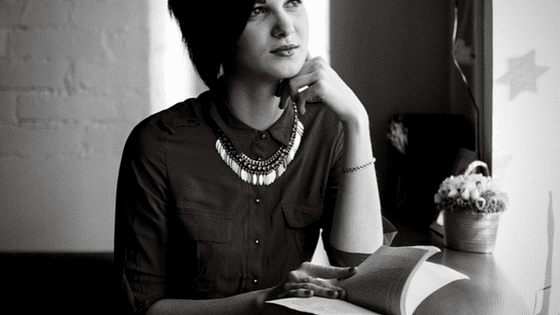Did you know there is more than one way to be assertive? Did you know that assertiveness is a skill that you can learn? Before I talk about that, let’s look at what assertiveness is and is not. Some people confuse assertiveness with aggression, and think that to assert yourself is to stubbornly argue a point without compromise. This couldn’t be further than the truth! Being assertive means communicating your needs, wants, feelings, beliefs, and opinions to others in a direct and honest way, without intentionally hurting anyone’s feelings.

It can be helpful to think about assertiveness as the middle point on a continuum between aggression at one end and passivity at the other. Being aggressive in interactions with others may get you what you want in the short-term, however it is likely to put a strain on your relationships in the long-term. Taking a passive approach though is really no better. It may help you to avoid conflict, but the personal price you pay includes feeling helpless and out of control. In contrast, being assertive – with direct and honest communication – can reduce conflict, build your self-confidence, and improve your personal and work relationships.
We are not born with ‘assertiveness’. Assertiveness is a skill. And that means anyone can learn how to be more assertive. Being assertive means:
- Standing up for your rights and not being taken advantage of.
- Communicating what you really want in a clear fashion, respecting your own rights and feelings and the rights and feelings of others.
- An honest and appropriate expression of one’s feelings, opinions, and needs.
So if assertiveness reduces conflict, builds confidence, and is good for relationships why don’t more people assert their wants and needs?
Why Do People Avoid Being Assertive?
Most people are not assertive for fear of upsetting others and of not being liked. Another reason people avoid being assertive is because they are not sure how! Assertiveness, like any skill, needs to be learned and practiced. In a nutshell, assertiveness is:
- An expression of who you are, it communicates your values,
- Honest,
- Respectful of others rights and boundaries,
- Learned,
- Communication – both verbal and nonverbal (posture, eye contact, tone of voice, gestures).
How Assertive Are You?
To determine if you could benefit from being more assertive in your life, take a moment to answer the following questions:
If your answer to most of these questions is ‘no’, then you may benefit from learning some assertiveness skills. An important factor to keep in mind is that there is more than one way to be assertive. Next I will discuss five types of assertiveness and examples of how you can use these in your daily life.
Five Types of Assertiveness
- Basic Assertion
Basic assertion is a simple expression of your personal rights, beliefs, feelings, or opinions. Let’s look at a reasonably frequent example in peoples lives – being interrupted. If you are interrupted, you might say to the person “Excuse me, I’d like to finish what I’m saying.” Often, the other person will be unaware that they have interrupted or spoken over you, and this simple technique allows you to express your need simply and firmly. - Empathic Assertion
This is the acknowledgement of another person’s situation or feelings followed by a statement standing up for your rights. A person is less likely to become angry or defensive if you acknowledge and validate the emotion behind what they are saying. You might say something like – “I know you are feeling angry and frustrated while you wait for a response [this is the acknowledgement], I completely get why you would feel like that [this is the validation]. But, the best I can do is give you a ballpark estimate of how long it will take.” This is a particular skill I teach to couples during couples counselling – how to listen for the emotion in what a person is saying. - Escalating Assertion
This is where you begin with an assertive response, however the other person (for whatever reason) fails to respond. You would then gradually escalate the assertion. That is, you would become increasingly firm without being aggressive. So turning back to the first example, if the person continues to interrupt you, you might say “I know what you have to say is important, but I really want to finish what I was saying”. - I-Language Assertion
This type of assertion is very effective during conflict, and it is a technique I specifically teach to couples to help them to manage conflict more effectively. It is made up of a number of very specific statements:
Description of behaviour: “When you … ,”
How it affects you life: “It affects … ,”
Describe your feelings: “and I feel …;”
Describe your desire: “Therefore, I would like …”
Let’s put all of that together in an example. Imagine a couple having an argument. Katie notices that Paul is starting to raise his voice and she is getting uncomfortable and a little scared. Katie might say something life this – “When you raise your voice (the effect is) I start to shut down because I feel scared. Therefore, I would like for you to use a softer tone of voice to tell me what you want.”
- Positive Assertion
For a lot of people, this final type of assertiveness can be the most difficult. It is about expressing positive feelings about yourself or someone else. Most people can feel uncomfortable ‘blowing their own trumpet’, but is has a wonderful impact on your self-esteem and is an important skill to master. Imagine a dad reviewing his day with his partner – “I know I’ve had some difficulty with disciplining in the past, but I did a really good job today.” Or someone talking to their boss – “I really feel I managed that complaint well.”
Or a parent talking to their child – “wow that was a really big feeling you had. It can be scary when you have big feelings like that can’t it? I am so proud of how you managed that right now.”
The way we communicate with others and with ourselves ultimately determines the quality of our lives – Tony Robbins























